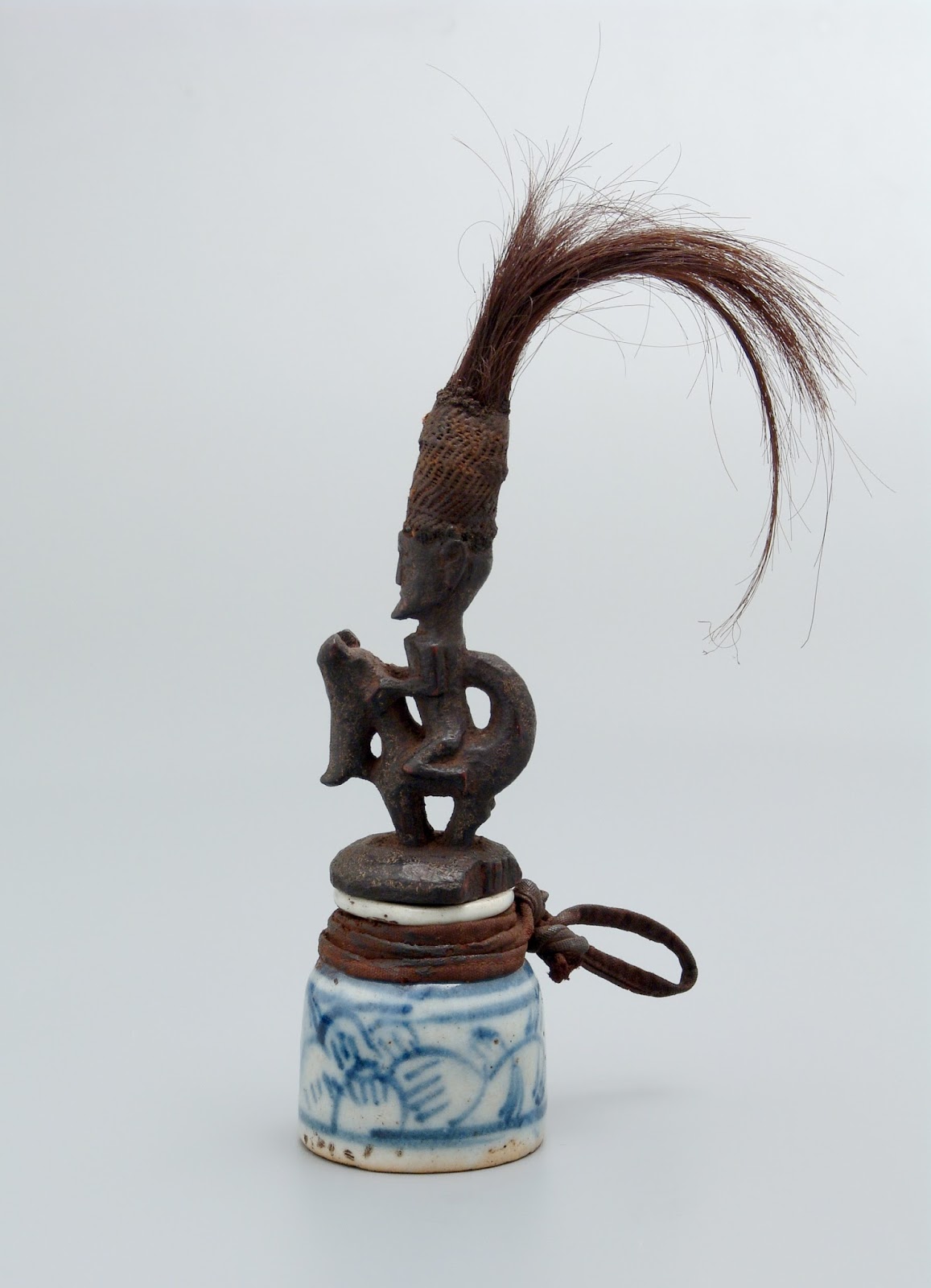
Medicine Jars (Guri Guri)
Porcelain: China, 19th century
Wood and Rattan: Northen Sumatra, 19th century
This object originates from the Bataks who live mostly in the mountainous regions of northern Sumatra. Magic formed the main gist of Batak religious practice before the widespread of Christianity in the early 20th century. Batak priests known as datu stored their medicinal concoctions(pupuk) in ceramic with carved wooden stoppers, known as guri guri. These imported ceramic jars from China were often highly prized as heirlooms for the Bataks. Batak priests normally produce a wide variety of medicinal concoctions both for use in healing and for enhancement of protection amulets and figures. Pupuk was commonly ritually applied to objects and sculpted figures in order to animate them with magic for protection or aggression. At times, these medicinal concoctions may be used to eliminate enemies at war.
Mythical creatures such as singa are common in Batak carving and often adorn the role as handlers of tools. The wooden stoppers were used to seal the mouths of the vessels. The singa is often associated with the idea of prestige and supernatural power. The singa often takes the body of a horse, the mount and protector of important ancestors and divine beings. Horses were regarded as a superior good and only the elites were able to afford them, therefore, horses were often associated with the high rank and chiefs. Combining this with the fact that the batak people willingness to import this from China to their mountainous regions, the long trouble further valued that this guri guri was an important product among the Batak people.
Pupuk was prepared from the remains of a ritually executed human victim with liquid it holds being the bodily fluids of the victim. The Batak believed that the victim’s spirit could be summoned to perform the datu’s bidding. The wooden stopper, in this case, I believed was used to prevent the spirit from escaping the container and protecting the supernatural power held within at the same time.
Ceramics imported from China were valued by many indigenous groups in Southeast Asia for their rarity, beauty and durability. These ceramics were used as currency and more commonly for rituals. Miniature jars were made in China for the function of exporting oils and ointments to Southeast Asia for trade in local spices such as cloves and sandalwood.
With relation to our group’s theme, the use of imported Chinese ceramics by the Batak people reflects the highly developed trade network and there were close connections between these two cultures, thereby, there was a change in usage of such vessels when it comes in contact with a different culture, in this case, in Indonesia, Sumatra.
Sources:
Dalleva, Anne. “Art of Island Southeast Asia: The Fred and Rita Richman Collection in the Metropolitan Museum of Art./Island Ancestors: Oceanic Art from the Masco Collection:Art of Island Southeast Asia: The Fred and Rita Richman Collection in the Metropolitan Museum of Art.;Island Ancestors: Oceanic Art from the Masco Collection,.” Museum Anthropology 19, no. 2 (1995): 111-12.
Vergouwen, J. C. “The Genealogy of the Batak People.” The Social Organisation and Customary Law of the Toba-Batak of Northern Sumatra, 1964, 5-16.

Nice contextual analysis.
But, if you are quoting directly, then please use quotation marks.
Each student needs to provide 4 different types of sources.